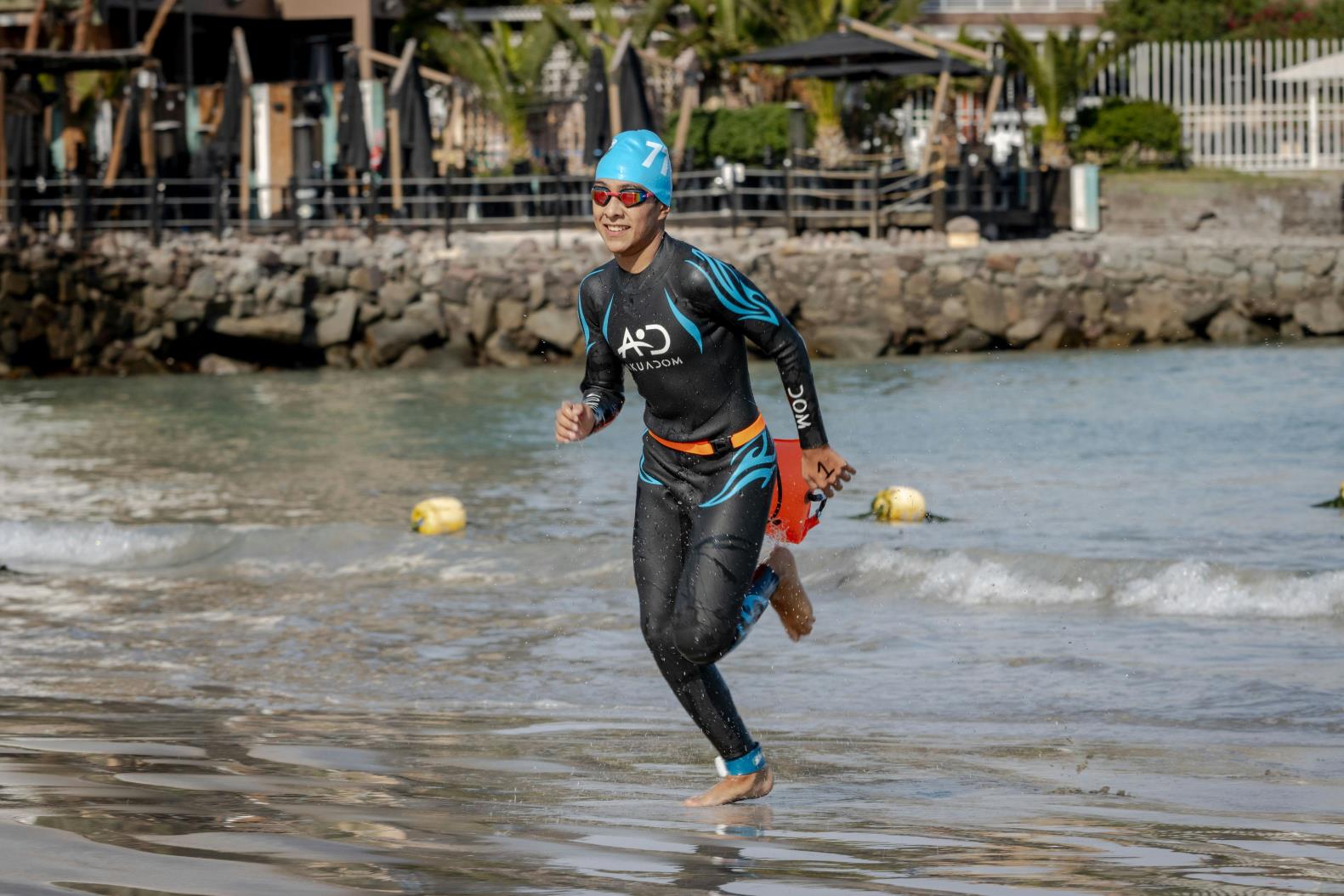Greasing the Groove: Maximizing Triathlete Training Efficiency
 Karen Parnell
June 21, 2024
Karen Parnell
June 21, 2024
Greasing the Groove: Maximizing Triathlete Training Efficiency

Photo by Andrea Piacquadio
Get your FREE 23-Page Athletes Guide to Strength and Conditioning
What is Greasing the Groove?
"Greasing the Groove" (GTG) is a strength training concept popularized by Pavel Tsatsouline, a fitness expert and former Soviet Special Forces trainer. The principle revolves around frequent, sub-maximal training sessions to improve neuromuscular efficiency and skill acquisition.
Instead of pushing muscles to failure with heavy weights or long workouts, GTG emphasizes performing exercises at a lower intensity but with higher frequency throughout the day.
Greasing the groove is a term that comes from strength training, which effectively means; performing the movement, improves the movement. Greasing the groove allows the body to become familiar with a movement with less weight or strain, so that it can learn the form and engagement when weight is added.
This can be applied to many aspects of triathlon (swimming, cycling and running) but in this Blog we will focus on it’s application in making strength work part of your normal daily routine.

Photo by jose luis Umana
Get your FREE athletes guide to strength and conditioning
Origins of the Concept of Greasing the Groove (GTG)
Pavel Tsatsouline introduced the concept of GTG in his book "Power to the People!" and has since applied it to a variety of strength exercises.
The idea is rooted in neurological training, where the focus is on improving the nervous system's ability to recruit muscles efficiently. This approach is different from traditional muscle hypertrophy or endurance training, aiming instead to enhance the body's ability to perform specific movements more effectively.

Get your FREE athletes guide to strength and conditioning
How GTG Benefits Triathletes
Triathletes often face the challenge of balancing their training across three disciplines—swimming, cycling, and running—while also incorporating strength training. Strength, mobility, stability and flexibility training has proven to help avoid injury plus improve power so should be a focus for all athletes.
The demands of this multi-sport training can lead to time constraints and fatigue. GTG offers several benefits for triathletes:
- Time Efficiency: GTG sessions are short and can be easily integrated into a busy schedule. This makes it easier to fit in strength training without compromising swim, bike, or run workouts.
- Reduced Fatigue: By avoiding muscle failure and heavy lifting, GTG minimizes recovery time and reduces the risk of overtraining.
- Neuromuscular Coordination: GTG enhances neuromuscular efficiency, which can improve overall performance in all three triathlon disciplines.
- Consistency: The high frequency of GTG promotes consistency, a key factor in athletic improvement.
- Injury Prevention: Incorporating strength, mobility, stability, and flexibility training helps athletes avoid injury by improving overall body mechanics and resilience (Hrysomallis, 2009).
.jpg)
Photo by Karolina Kaboompics
Get your FREE athletes guide to strength and conditioning
Example GTG Protocol for Triathletes
A GTG protocol for triathletes might focus on bodyweight exercises and movements that complement their primary training. Here’s an example:
- Push-ups: Improve upper body strength and stability.
- Pull-ups: Enhance upper body pulling strength, useful for swimming.
- Bodyweight Squats: Strengthen the legs and core, supporting running and cycling.
- Planks: Develop core stability and endurance.
Sample GTG Weekly Schedule
Here is a sample weekly schedule integrating GTG into a triathlete's routine:
Monday:
Rest Day (Include some meditation and breathing exercises throughout the day)
Tuesday:
- Swim Workout
- GTG:
- Morning: 2 x 10 Push-ups, 2 x 5 Pull-ups
- Lunchtime: 2 x 15 Bodyweight Squats
- Evening: 2 x 30-second Planks
Wednesday:
- Bike Workout
- GTG: Same as Tuesday, spread throughout the day
Thursday:
- Run Workout
- GTG: Same as Tuesday, spread throughout the day
Friday:
- Run to Bike Brick Workout
- GTG: Same as Tuesday, spread throughout the day
Saturday:
- Long Run
- GTG: Light recovery exercises, focus on stretching and mobility
Sunday:
- Long Bike
- GTG: Light stretching and mobility work
Tips for Implementing GTG
- Stay Sub-Maximal: Perform each set well below your maximum effort to avoid fatigue.
- Spread It Out: Distribute the exercises throughout the day to maximize frequency without causing excessive fatigue.
- Stay Consistent: Consistency is key. Ensure you stick to the routine even on days with primary workouts.
- Listen to Your Body: Adjust the intensity and volume based on how your body feels, especially considering the cumulative fatigue from triathlon training.
Get your FREE athletes guide to strength and conditioning
.jpg)
Photo by Ketut Subiyanto
Get your FREE athletes guide to strength and conditioning
Conclusion: Greasing the Groove for You
Greasing the Groove offers a practical and efficient way for triathletes to incorporate strength training into their busy schedules. By focusing on frequent, sub-maximal efforts, triathletes can enhance their neuromuscular coordination and overall performance without the risk of overtraining.
Embrace this approach to achieve a well-rounded, resilient, and strong body ready for the demands of triathlon competition.
Karen Parnell is a Level 3 British Triathlon and IRONMAN Certified Coach, WOWSA Level 3 open water swimming coach, 80/20 Endurance Certified Coach and NASM Personal Trainer and Sports Technology Writer. Currently studying for an MSc in Sports Performance Coaching.
Need a training plan? I have plans on TrainingPeaks, Final Surge and TrainingTilt:
I also coach a very small number of athletes one to one for all triathlon distances, open water swimming events and running races, email me for details and availability. Karen.parnell@chilitri.com
Get your FREE athletes guide to strength and conditioning
References
Tsatsouline, Pavel. (1999). Power to the People!: Russian Strength Training Secrets for Every American. Dragon Door Publications.
Behm, D. G., & Sale, D. G.(1993). Velocity specificity of resistance training. Sports Medicine, 15(6), 374-388.
Enoka, R. M.(1988). Muscle strength and its development. New perspectives. Sports Medicine, 6(3), 146-168.
Häkkinen, K., Pakarinen, A., Alen, M., Kauhanen, H., & Komi, P. V.(1988). Neuromuscular and hormonal adaptations in athletes to strength training in two years. Journal of Applied Physiology, 65(6), 2406-2412.
Hrysomallis, C.(2009). Relationship between balance ability, training and sports injury risk. Sports Medicine, 39(3), 193-213.
Gabriel, D. A., Kamen, G., & Frost, G.(2006). Neural adaptations to resistive exercise: mechanisms and recommendations for training practices. Sports Medicine, 36(2), 133-149.
Sale, D. G.(1988). Neural adaptation to resistance training. Medicine and Science in Sports and Exercise, 20(5 Suppl), S135-S145.
Zatsiorsky, V. M., & Kraemer, W. J.(2006). Science and Practice of Strength Training. Human Kinetics.
